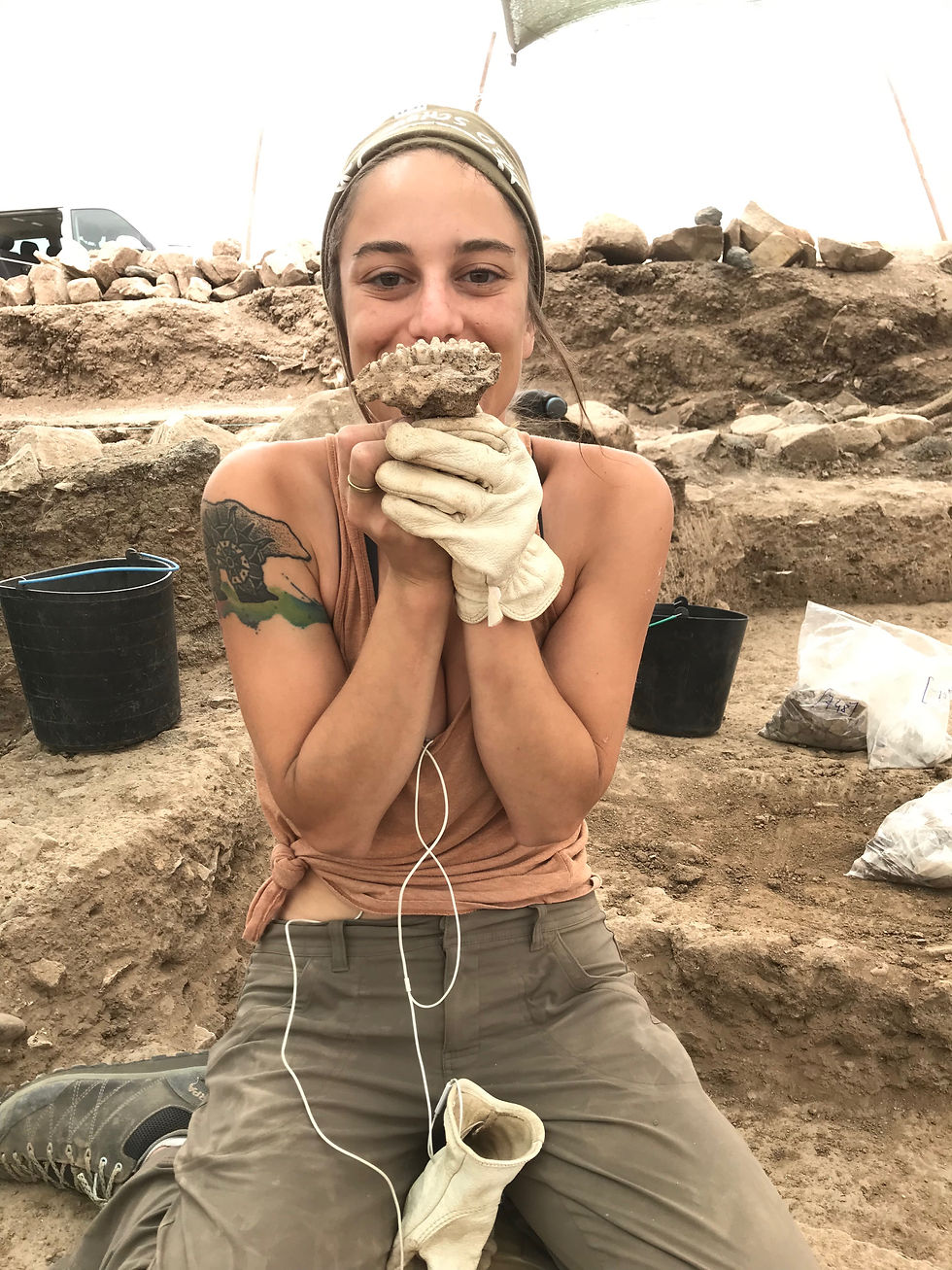Make No Bones About It...
- Gillian Scout Jaffe

- Mar 11, 2020
- 3 min read
Updated: Mar 12, 2020
The ethics of bioarchaeology in an increasingly globalized and digitized world.
Are human remains bodies or objects? When do they transition from one form of being to the other? When does “grave robbing” become “science”? Who do these remains belong to, and who has the right to say what happens to them? These questions plague the field of bioarcheology, complicating a field as rife with questions of ethics and ownership as any in anthropology. The endless march forward of technology only further obscures the most ethical path, with 3D printing and universal access to data opening up the field of bioarcheology to scrutiny.
One of the reasons I was drawn to physical archaeology/anthropology was the fact that the field, at first glance, seems to sidestep some of the ethical questions and moral grey areas that arise in fields like cultural anthropology. Initially it seems working with human remains would avoid the slippery traps of race or power dynamics. Bones are bones, right? Wrong. It turns out that slugging through the morass of ethics goes part and parcel with any field of anthropology and is increasingly complicated by advances in technology.
Take, for example, some of conversation currently taking place around the digital repositories of South African human remains and open access to anthropological data. South Africa, a country whose fabric is dyed in complicated, painful, and violent race relations, has concerns about how the digital data they make public may be used. It was not long ago that “science” like phrenology was used to argue for the superiority of some races over others or that the apartheid used dubious race science to enforce their laws.
The more I explored ethics in bioarcheology/anthropology the more I realized that, in many ways, the field actually presents a more complicated ethical landscape rather than a straightforward one. In archaeology, (putting aside, for now, ideas around sacredness) objects are objects and they always have been. When dealing with human remains, a line needs to be drawn that distinguishes forensic human remains from the archaeological in order to create laws around the treatment of each. These laws are not universal, they vary from country to country, and are often heavily based in context, which is open to interpretation. For example, in Portugal where I did field work in the Summer of 2019, a body only needs to be 20 years old before it is considered archaeological[1]. In the United States that number is closer to 100 years. It’s easy to imagine how these laws are based in culture and history as well, varying according to how a particular culture views and handles their dead.

Race relations and power dynamics also complicate this facet of bioarcheology with pressures for repatriation of bones. Currently, in the United States, thanks to the Native American Graves Protection and Repatriation Act (NAGPRA) it is illegal to trade any type of native remains, no matter how old, but no equivalent laws exist around the treatment and trade of non-native human remains. In the current digital age, how will these standards extend to replication of bones or the data these human remains provide? In South Africa, how ethically the bones were collected influences their present-day treatment; if relatives of the person are surviving their consent is necessary for any type of digital replication or scientific analysis. But even this solution to the ethical treatment of human remains is murky, as the definition of what constitutes a relation can be debatable.
I would argue that human remains and digital replication (such as a 3D print) of human remains are not the same and should not be subject to the same ethical scrutiny. In fact, 3D printing in many ways provides an elegant solution to repatriation: the bones themselves can be returned to their resting places but the bones’ data can be collected and saved. The concerns around the use of that data is a separate debate that belongs to the ethics of open anthropology. The only problem with this solution is the ever-evolving area of science: who knows what kind of data we will be able to glean from human remains in the future? Data that would be lost if remains are returned to their original resting places and unavailable for future generations of bioarcheologists to learn from. Depriving scientists of the future of the chance to interact with actual remains, rather than a copy, in itself seems wrong.
These issues seem to boil down to one question: when do the rights of the dead and their surviving relatives end, and the rights of the living and future living begin? Whose rights are primary and who can say what is ethical when the voices of many of those affected (those in the future and the deceased) cannot be heard? There is no easy answer to questions like these; only with continued conversation among those in the scientific and lay community can we forge an ethical path.

[1]This number is based on the author’s lecture notes.







Comments